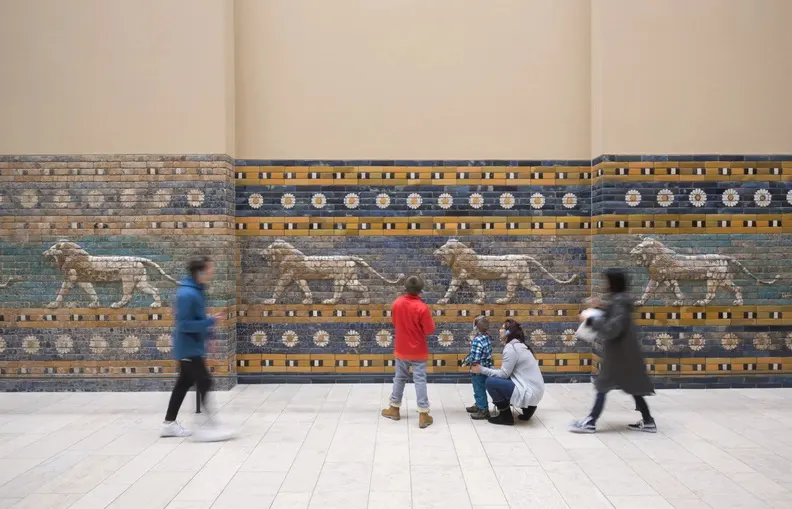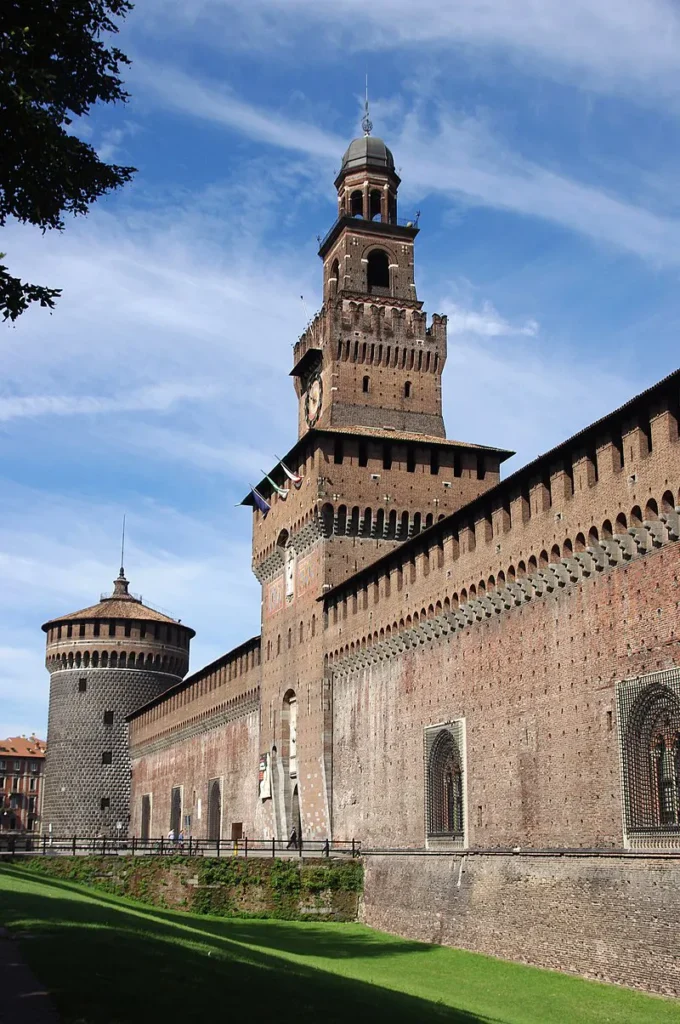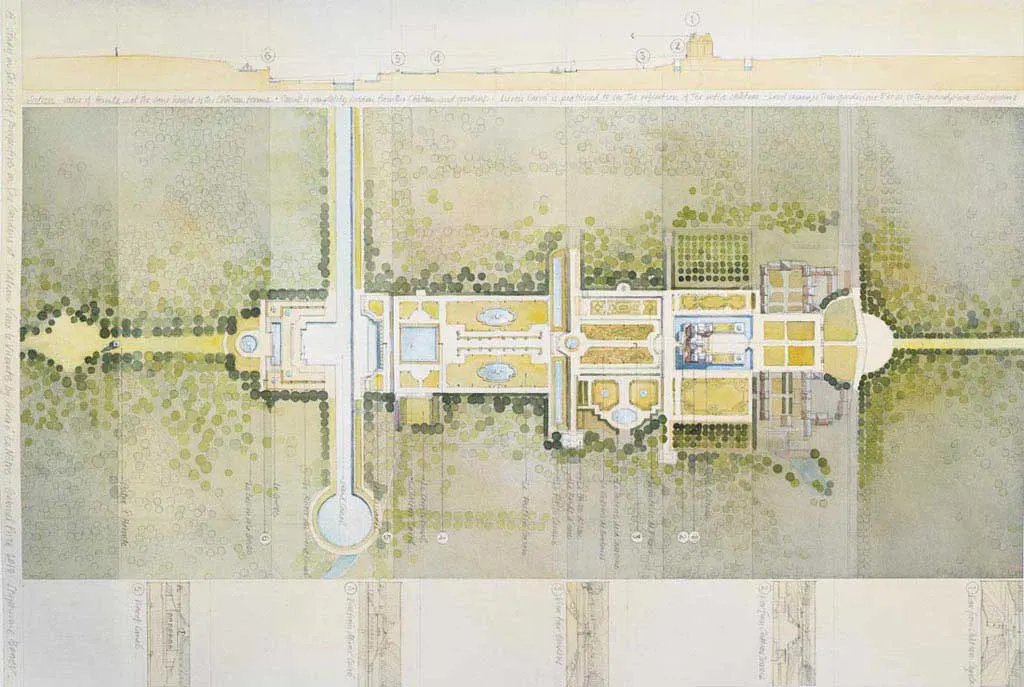Architecture and Art: The Art Influence is the second article of a series of articles1 about the art dimension in architecture. This article shows the initial art influence, in the Old Ages, on architectural development in various stages. The article shows the influence of art on architecture in the beginning actions of artists, setting out the beginning of art principles. Moreover, how artists interacted with architecture’s various functions. I show here the major role of art principles in architectural design. The role of art principles in historical architectural development.
Art influences on architecture had a dominant role and development. furthermore, In the Old Ages art had various forms of appearance. Art people decorated tools used in daily life. Also, the tools production process followed some initial art methods of production. Painters showed the art influence on architecture in the ornament on several locations in building elements, see Figure 1 . Ornaments appeared on the external elements of architecture. For example, the home’s doors and passages, the building’s corners and entrances. Moreover, in interior parts like arcades, and the top and bottom of columns in temples.

Paintings and sculptures appeared in open spaces and buildings. Many examples appear in European cities like Paris, Rome, and Germany, and others. Also, in public spaces and buildings in Asian cities like Japan and China.
The art influence – visual arts
The beginning of art, painting, represents one of the several types of visual arts. In later stages, the Old Ages pre-medieval period, people practiced art in the form of painting, sculpture, poetry, music, and so on. Rulers, governors, officials, and people of wealth had a great interest in the visual arts. Moreover, art people moved from city to city and country to country to follow the demand for art. Indeed, the continuous commission of art people to paint and carve sculptures created an interest in the art circle to develop this craftsmanship. Sculptures include special creatures in many locations in the city, and buildings.
Painters and sculptors practiced painting and carving different materials and built skills and experience in these visual arts fields. Step by step, every one of these art people built their own style in painting and carving. Also, they wrote notes on basic skills required to work in these fields. The gradual development in these fields pushed some talented art people to record and write books on the field of art. Art people developed the art of drawing and techniques. For example, Alberti’s 1435 book On Painting laid out the rules for depicting a three-dimensional scene on a two-dimensional surface. He was not only a scholar but also an architect, painter, classicist, poet, scientist, and mathematician. Here appears the art influence on architecture.
Alberti was one of the painters and architects who used the golden section to design elevations of buildings. That marks one of several attempts at art influence on architectural design, see Figure 2, Palazzo Rucellai façade by Alberti. The Greeks applied the golden section in the design of their religious buildings and the invention of the column orders before the Italians used it in designing facades.

Art entered a new era as painters and sculptors, and by practice became architects. The golden section appearance in art marks the role of painters in transforming a main element of painting. to clarify, this element became a tool in architectural design, used to design many building façades in Italy and Greece. Painters continued to use this tool widely in architectural design. They used it in the two dimensions and the application on the façades. The commissioned painters, architects continued to design buildings without specific rules. certainly, the rules that are studied today in the field of architecture in terms of functional, Structural, services, environmental requirements, and rules.
Architecture and art: art influence in defining the principles of architecture
Clients commissioned painters from Italy and Greece to conduct architectural design. They developed from doing 2d facade design to building design. thus, Painters, by doing these building designs they gathered a lot of experience in architectural design. These painters and architects expressed their perspective and artistic taste in writing rules for architecture and art. Many of these painters wrote books and guidelines for doing proper drawings and art sketching. In their writings, they expressed qualities, requirements, and characteristics of architectural design. In the times of the Roman Renaissance and equivalent time in Greece, several pioneers in art and architecture appeared, originally painters.
Antonio di Pietro, a sculptor and architect well known as Filarete. Officials commissioned him to design buildings such as the Ospedale Maggiore, a public district general hospital in Milan. A hospital founded by Francesco I Sforza in 1546 represents one of the oldest in the city. Filarete also worked on the Castello Sforzesco or Sforza Castle and on the Duomo di Milano or Milan Cathedral. See Figure 3, Sforza Castle. He exceeded the architecture design level to master planner and city designer as he laid out the concept of the city of Sforzinda. Filarete transferred all his experience in art and the architecture he designed in his book Libro architettonico , a form of treatise that includes 25 volumes on architectural design.

Leonardo di Vinci, another painter trained by Andrea del Verrocchio at the age of 15, his art had a direct influence on architecture. A constantly kept busy painter and sculptor, a technical adviser in the fields of architecture, fortifications, and military matters, and served as a hydraulic and mechanical engineer. Leonardo di Vinci invented a proportional system simulating the human body used by painters and architects for painting and architectural design. Leonardo’s sketches of various Renaissance buildings he designed and modified, architecture, and art material details have survived to date. He also laid out his counterpart’s concept of a city masterplan. Specialists in art consider Leonardo’s written notes on various fields as one of the most important notes in history.
Michelangelo, a sculptor, painter, poet, and architect a pioneer from Italy. Well known for his sculpture works like David, Pietà, Madonna of the Stairs, and others. Clients commissioned him to complete works on buildings to add sculptures and paintings to the walls. He designed various buildings, such as the Medici Chapel, the Laurentian Library and fortification, the tomb of Julius II, and St Peter’s Basilica, see figure 4.

Art historians mentioned that Vitruvius wrote the ten books of architecture. He took a lot of his writing from Greek architects, while historians considered them the only architectural reference. The specialists who confirm that there is no evidence that Vitruvius wrote the ten books of architecture. Several references confirmed that people who worked in the same field wrote those books. Because they lacked art content, these books were not of interest to painters, sculptors, and architects.
Artists and sculptors I have shown participated in art and architecture development. By applying the same principles, rules, and techniques they have learned from their teachers to art painting and sculpture in architectural design. Painters and sculptors dealt with architecture as an object, whether in designing the building facades or making the building mass as attractive by applying massing and sculpture techniques of shade and shadow.
The art influence exceeded the architecture field. Indeed, to affect the field of landscape architecture of palaces, public gardens, and parks. The art influence on architecture appeared in these landscape projects, reflecting the rules of symmetry, harmony, focal point, and dominance. See Figure 5.

[…] Architecture and Art: The Art Influence […]
[…] Architecture and Art: The Art Influence […]
[…] Architecture and Art: The Art Influence […]
[…] Architecture and Art: The Art Influence […]
[…] Architecture and Art: The Art Influence […]
[…] Architecture and Art: The Art Influence […]
[…] Architecture and Art: The Art Influence […]